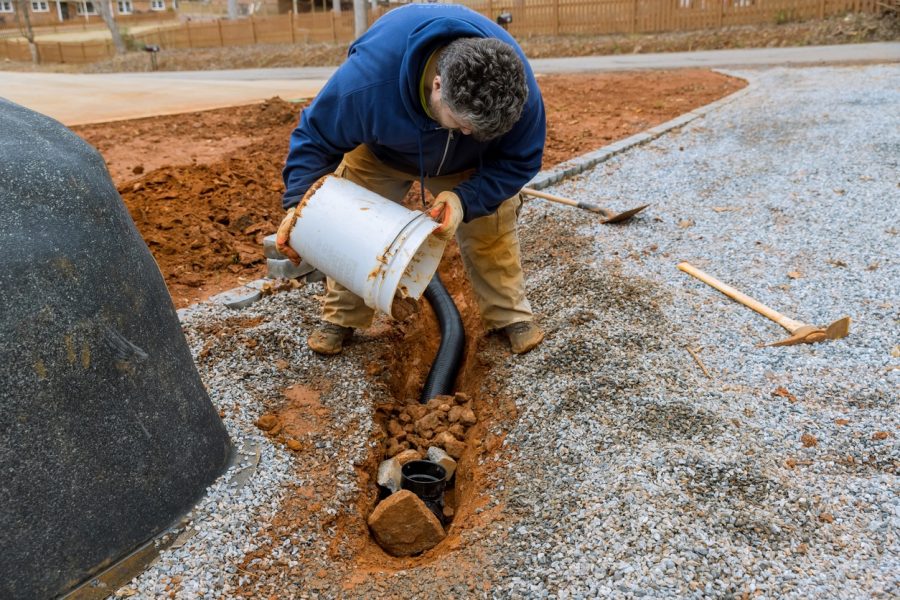Is drain lining a good fit for your home? Fixing damaged pipes can feel like a nightmare for homeowners because traditional digging methods are messy and expensive, but there’s an easier way that doesn’t involve tearing up your yard: drain lining. This newer method helps you save both money and time while leaving your property intact.
In this guide, we’ll break down how drain lining works, so you can decide if it’s what your plumbing needs.
What is Drain Lining?
Drain lining also called trenchless pipe repair, fixes damaged pipes by placing a resin-coated liner inside them. This liner sticks to the pipe’s interior walls and forms a sturdy new layer. It acts like inserting one pipe inside another repairing the old pipe without needing to dig up the area.
How It Works
The process uses a few main steps:
- Inspection: Professionals inspect the pipes closely with a mini camera. This step helps them assess the damage and decide if using a lining will solve the problem.
- Cleaning: Workers clean the pipes to clear out debris, grease, or blockages before they install the liner. They often use high-pressure water jets to get this done.
- Liner Insertion: They push the resin-coated liner into the pipe. Air pressure inflates the liner so it presses against the existing pipe walls.
- Curing: Heat or UV light cures the liner once it is positioned. This hardens the resin and helps it stick to the pipe walls.
- Final Inspection: After curing, crews check the pipe to make sure the repair worked and everything is in good condition.
Why Use Drain Lining?
Less Disruption
It causes very little disturbance to your property. Unlike older methods that rely on a lot of digging, this solution often needs a couple of access points to work. You can avoid ruining lawns, driveways, or gardens, which means no spending extra time or cash fixing them later.
Saves Money
The upfront cost might be similar to digging-based repairs, but the long-term benefits make it worth it. Skipping heavy excavation cuts down on costs to restore your property and speeds up the repair process. Plus, the strong lining material lasts longer so you won’t deal with frequent breakdowns.
Durable Solution
The materials can last a long time. Many setups stay functional for 50 years or even more. This durability helps homeowners feel secure knowing their plumbing is less likely to face trouble down the road.
Better Water Flow
The smooth surface of the new lining helps water move more. This lowers the chances of clogs and backups happening. It is helpful in old pipes where the insides might have worn down and become uneven.
Problems Solved by Drain Lining
Drain lining works well to fix several plumbing problems such as:
- Cracks and Leaks: Pipes can crack as they age causing leaks. This process seals those cracks to stop further issues.
- Root Intrusion: Pipes often get blocked or damaged when tree roots grow into them. The new lining seals off entry points stopping roots from getting in again.
- Corrosion: Pipes made of materials like cast iron or clay experience corrosion over time. The lining creates a barrier to stop further damage from happening.
Limits of Drain Lining
Even though it has many advantages, it does not work for every situation. Some issues may require other methods.
Not Ideal for All Types of Damage
When a pipe is damaged, collapsed, or not aligned, drain lining might not be the right fix. In those cases, digging up and replacing the pipe may be the only option.
Access Issues
Reaching the pipes can be tough in some spots. If pipes sit in tricky or tight locations extra steps might be required to get the job done.
Not a Permanent Fix
It can last a long time, but it doesn’t solve the problem forever. The liner can wear down or break meaning more repairs could be needed later.
Costs in Comparison: Drain Lining vs Digging
When looking at repair expenses, you need to compare drain lining to traditional digging methods. The initial price might be about the same, but it often offers better savings in the long run.
| Cost Factor | Drain Lining | Traditional Excavation |
| Initial Repair Cost | Moderate | Moderate to High |
| Restoration Costs | Minimal | High |
| Time Required | Short (1-2 days) | Long (several days) |
| Longevity of Repair | 50+ years | Varies |
Picking the Best Contractor
To complete your job, hiring the right contractor matters. Use these ideas to choose :
- Experience: Hire someone experienced in trenchless technology and drainage work.
- Feedback and Proof: Read online feedback and request past client references to judge how good their work is.
- Certifications: Make sure the contractor has the proper licenses and certifications needed to handle drainage work.
- Clear Pricing: Pick a contractor who offers straightforward and upfront pricing, so there are no surprises later.
Wrapping Up
Drain lining offers a smart and practical way to fix broken pipes without digging up large areas. It works well because it’s less disruptive, saves money, and lasts a long time. This makes it a good option for fixing plumbing problems at home. But you should look at your specific situation and talk to an experienced contractor to see if drain lining fits your needs.
If your pipes are damaged and you’re thinking about the advantages of drain lining, contact a drainage expert. A professional can offer advice and help you decide what’s best to fix your plumbing and effectively.
Book your drainage inspection today: Call 0203 633 3897 or send us a message.

